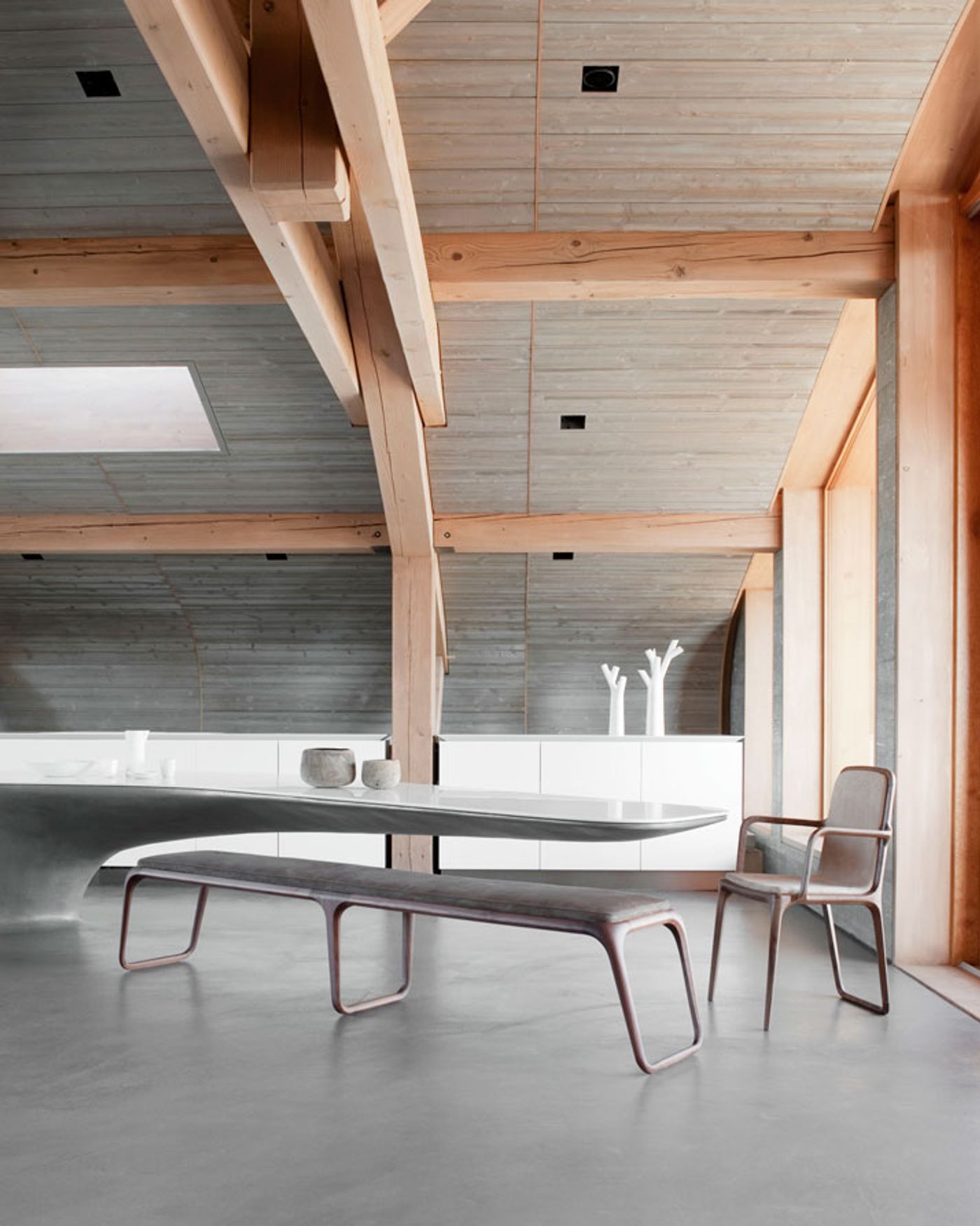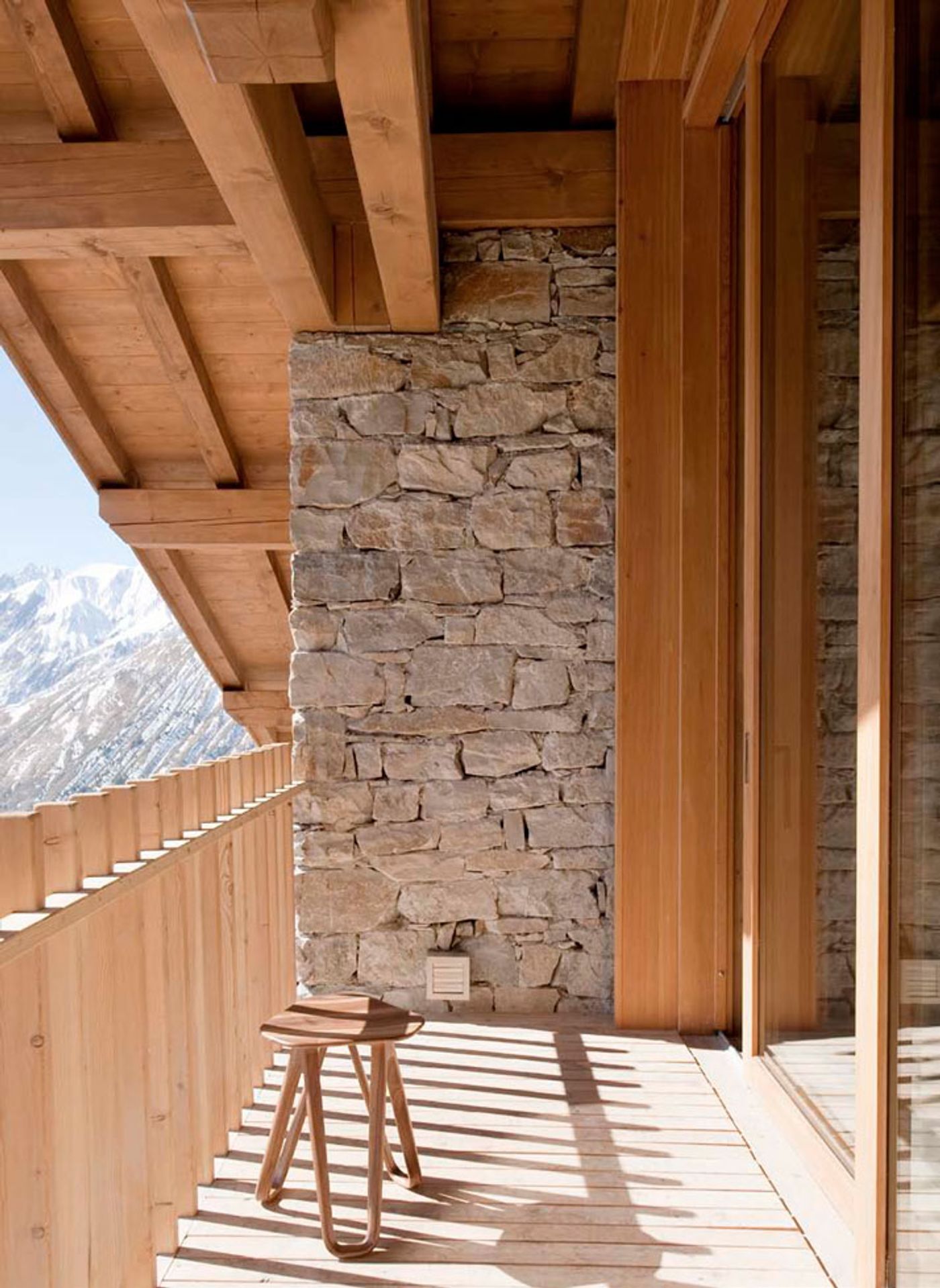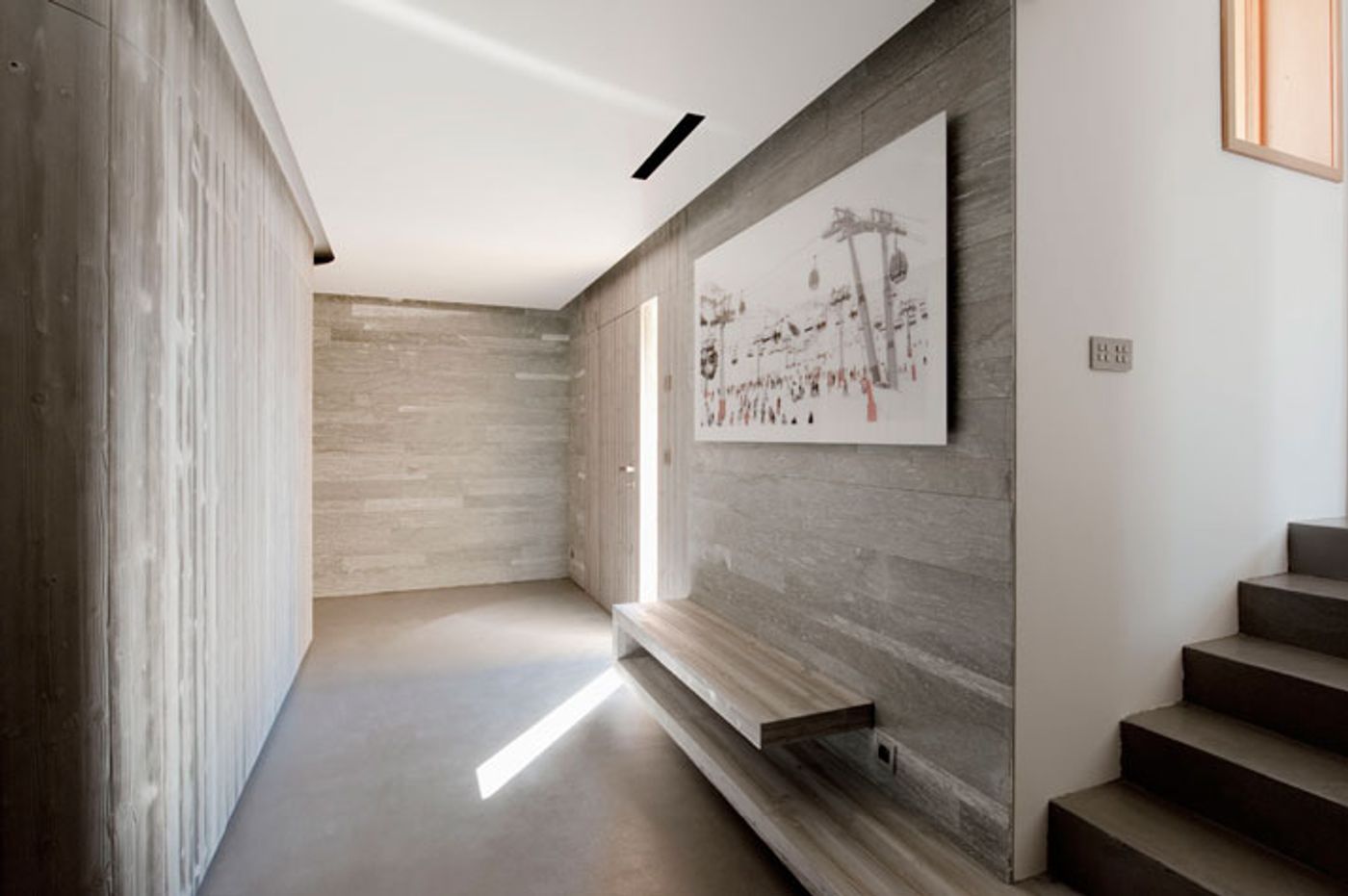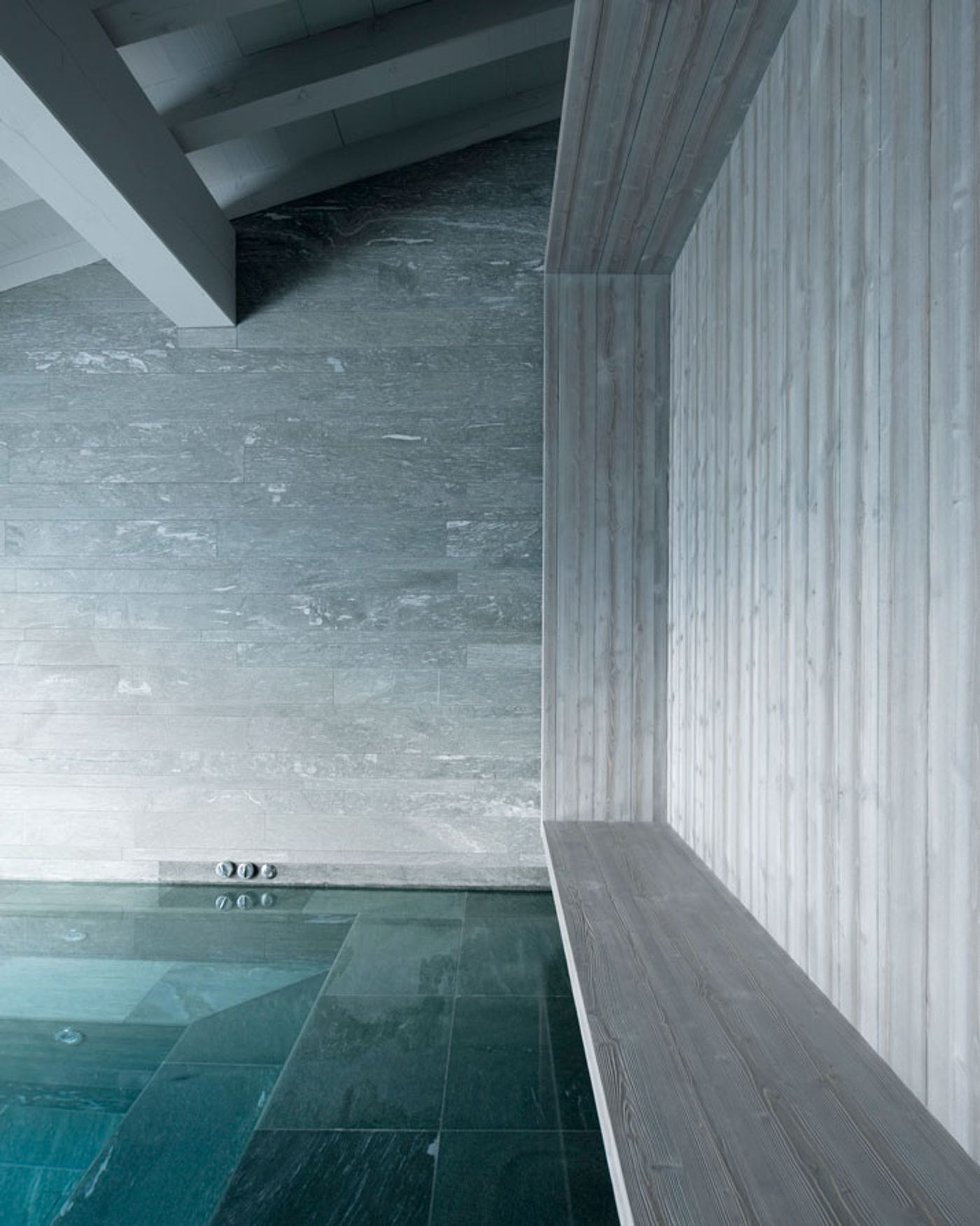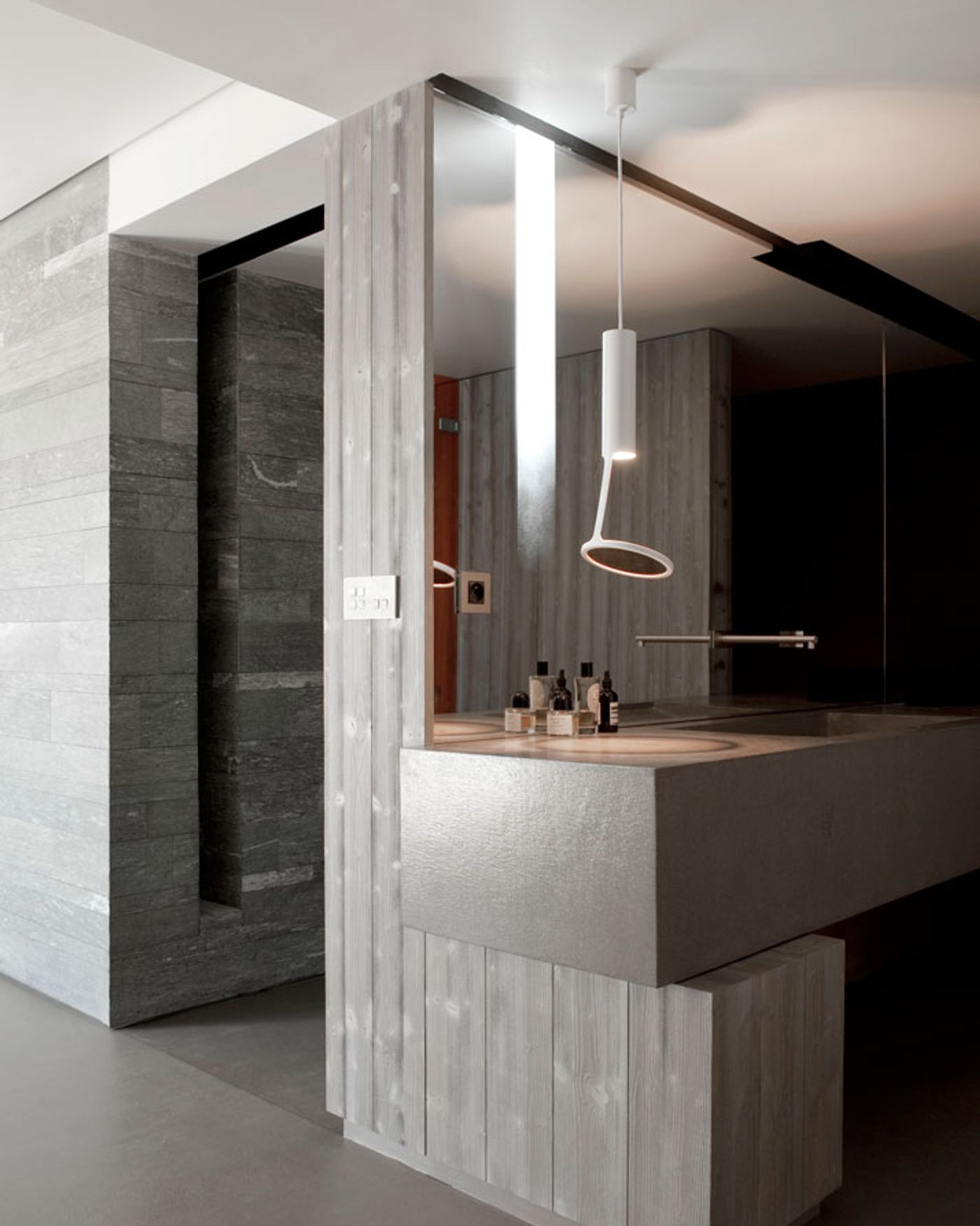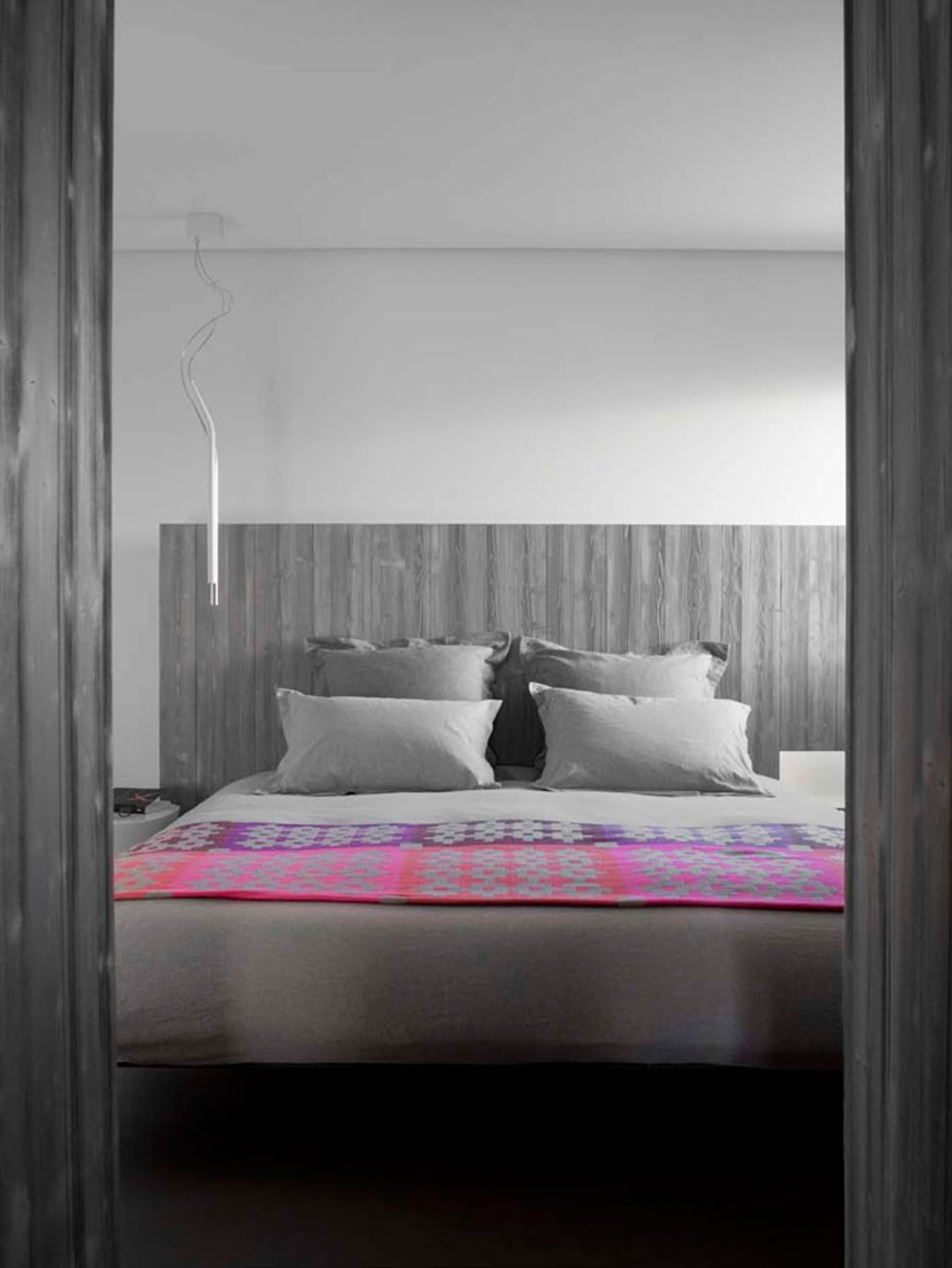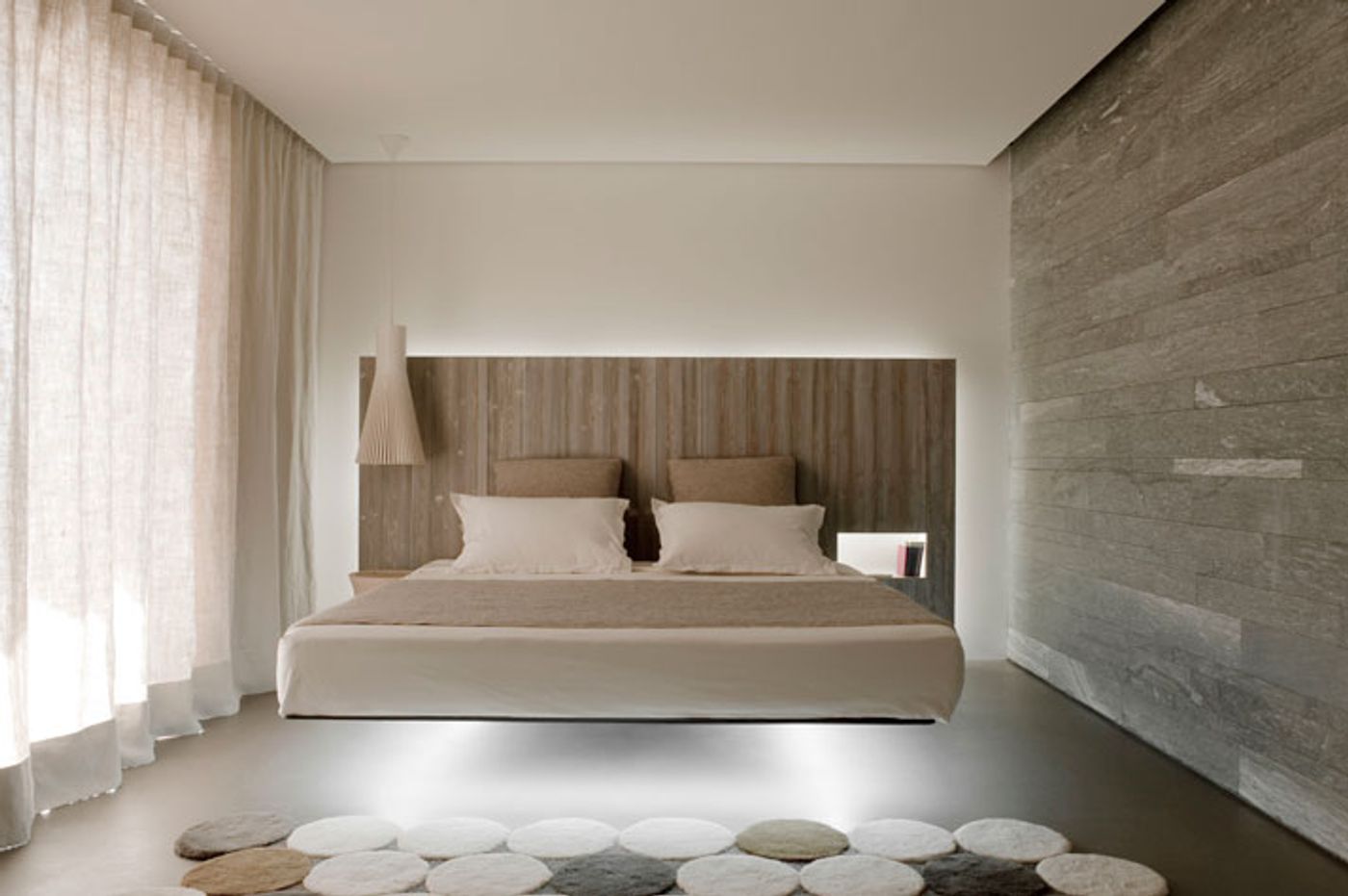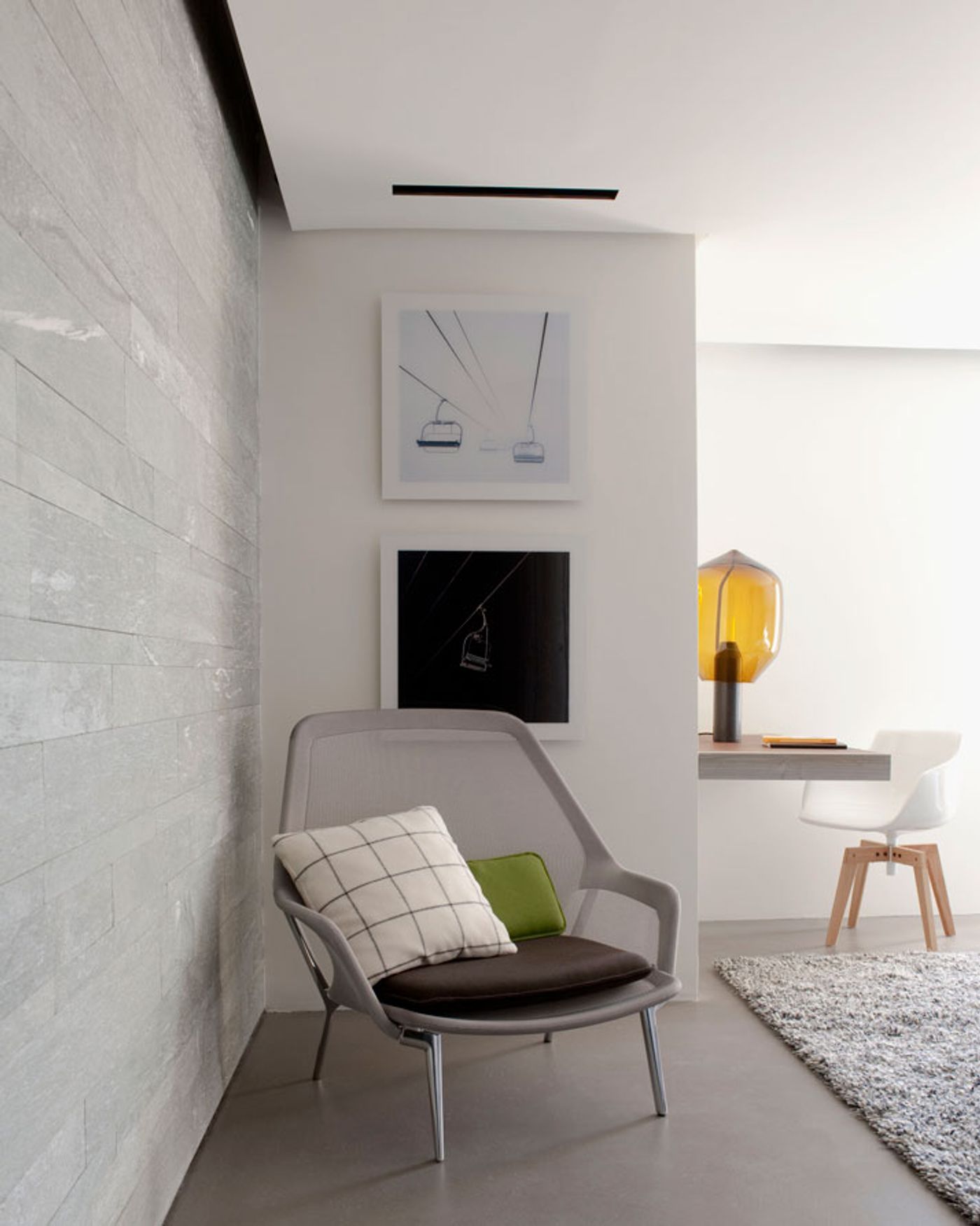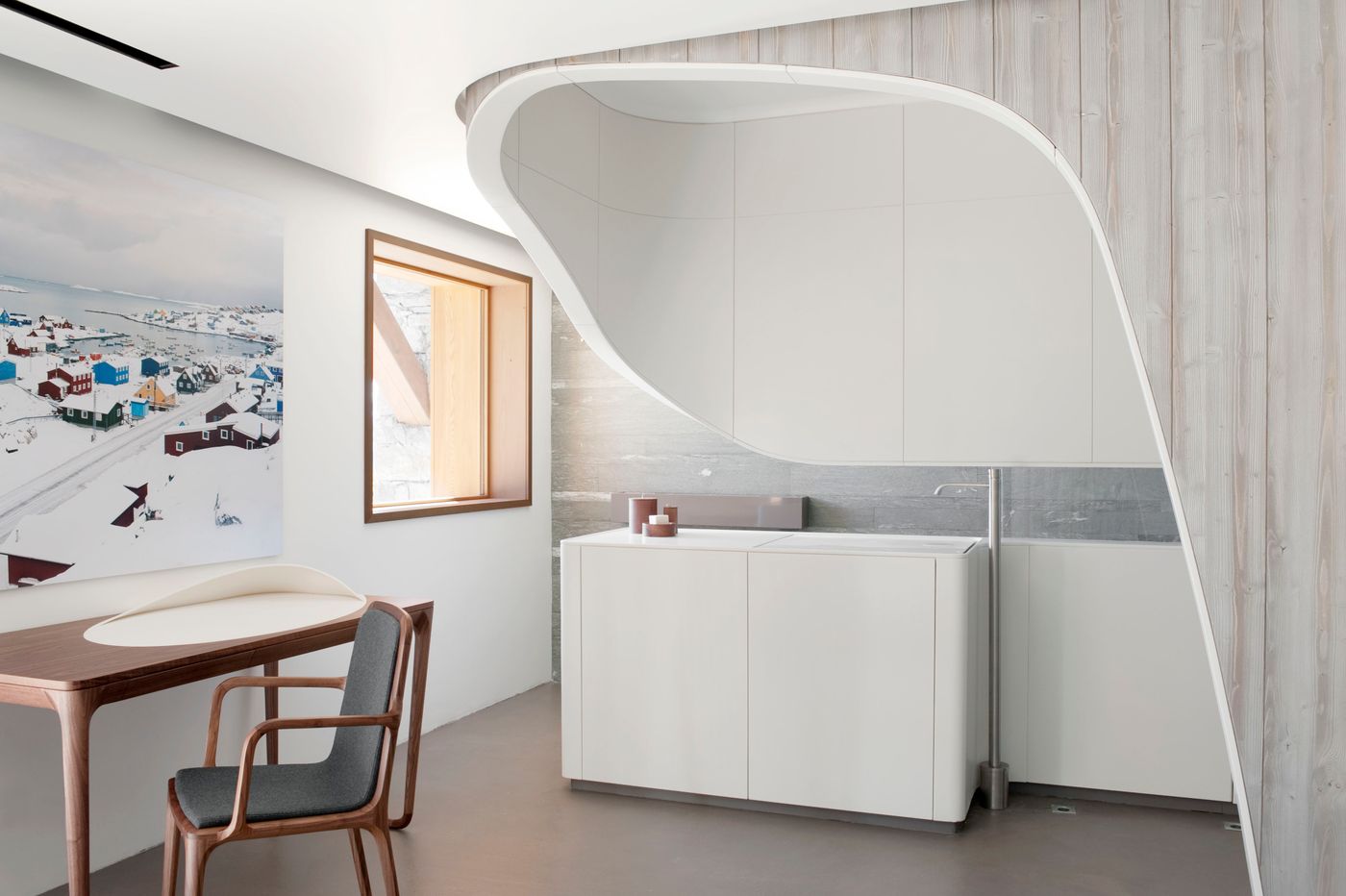
Chalet Béranger by Noé Duchaufour Lawrance
Words by Marcia Argyriades
Location
Saint-Martin de Belleville, France
Chalet Béranger by Noé Duchaufour Lawrance
Words by Marcia Argyriades
Saint-Martin de Belleville, France
Saint-Martin de Belleville, France
Location
Despite the traditional chalet exterior appearance, this is no ordinary chalet in terms of its interior. The interior architecture of this family home in the French Alps is inspired by mountains and valleys in a modern character where organic forms are composed around a strip of wood. The entire program, construction, and interior architecture are all built around the focal point of the chalet – a large room where the family comes together around a warm hearth.
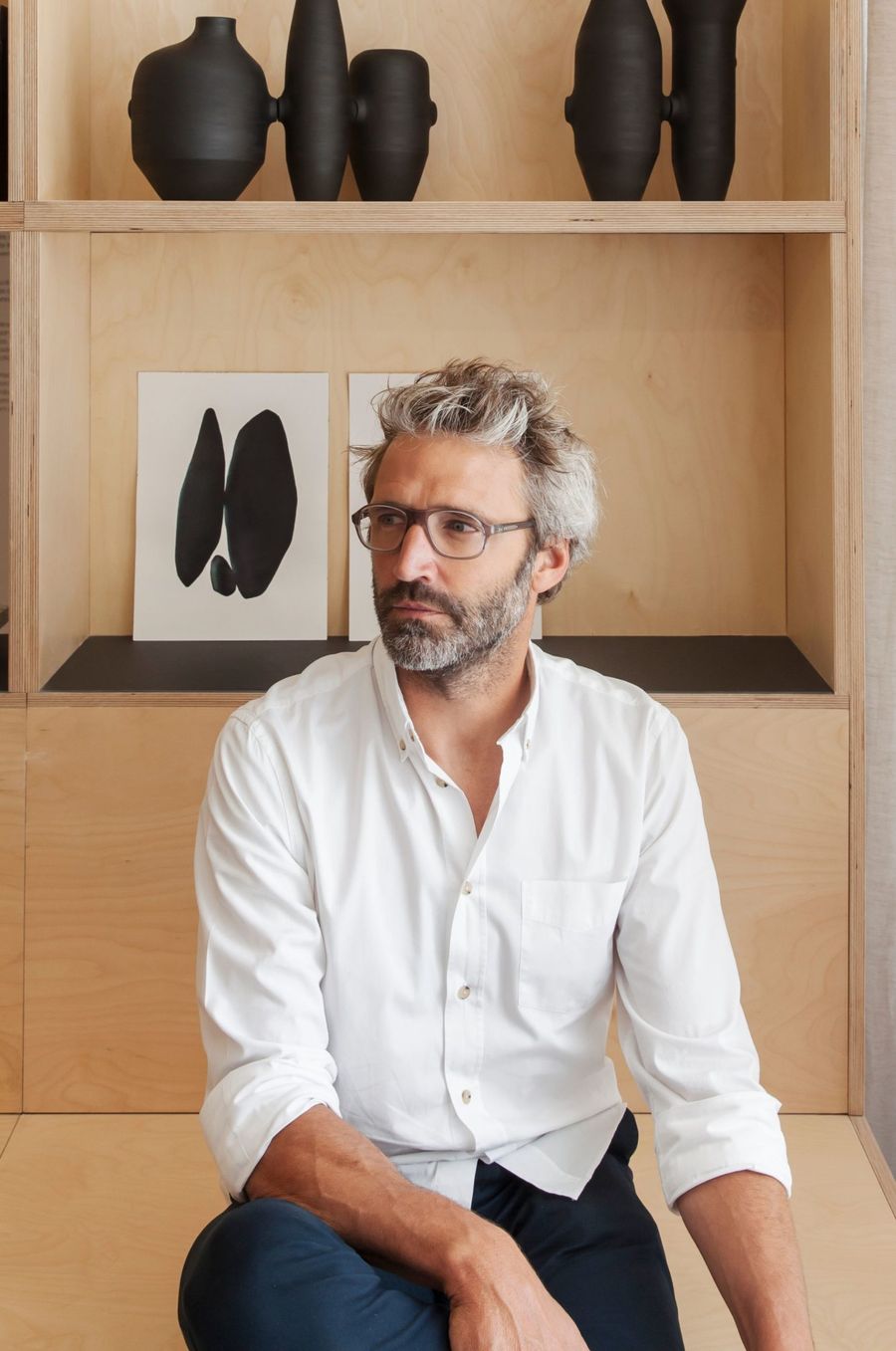
Noé Duchaufour Lawrance
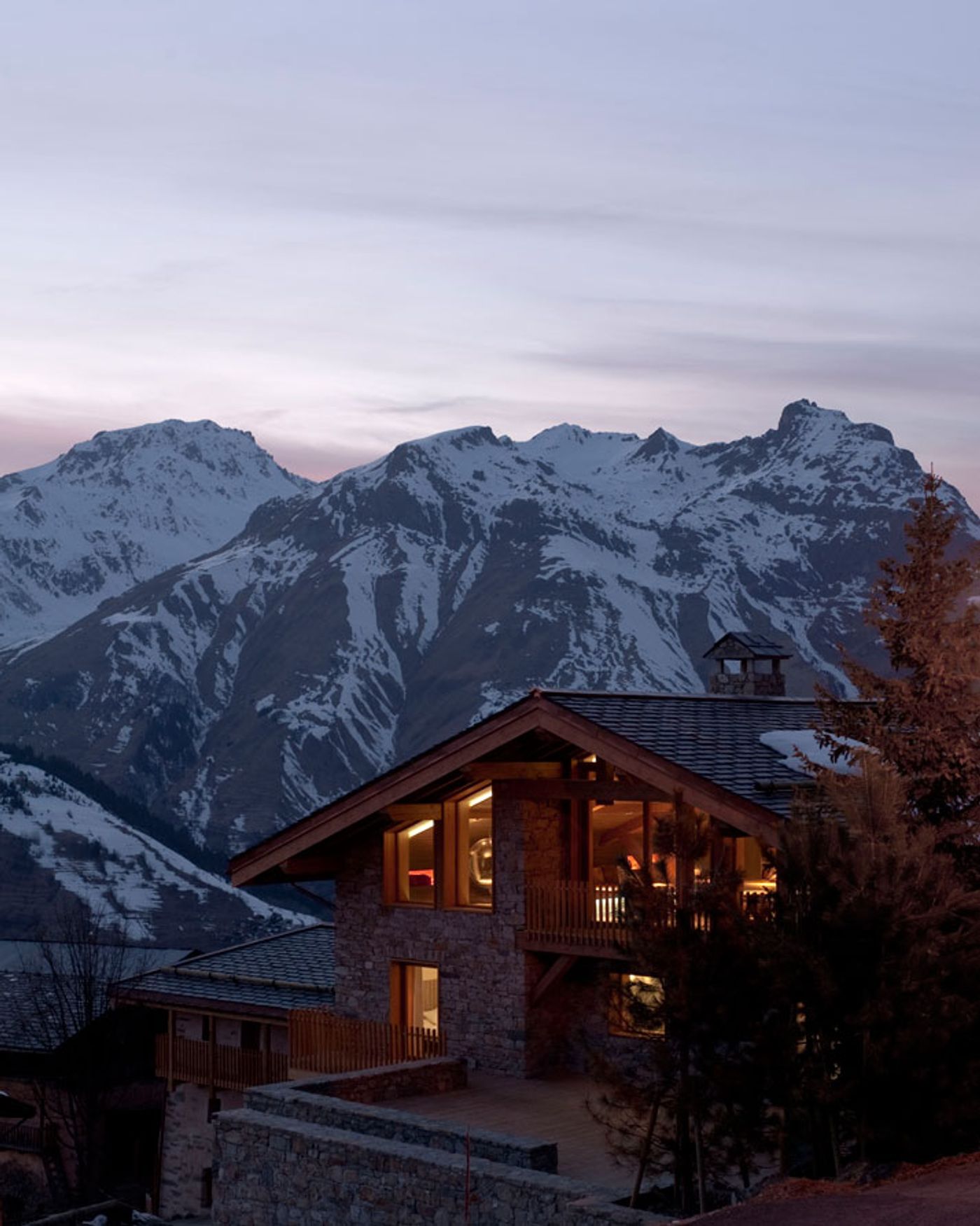
photo © Vincent Leroux
Despite the traditional chalet exterior appearance, this is no ordinary chalet in terms of its interior. The interior architecture of this family home in the French Alps is inspired by mountains and valleys in a modern character where organic forms are composed around a strip of wood. The entire program, construction, and interior architecture are all built around the focal point of the chalet – a large room where the family comes together around a warm hearth.
Located in the St. Martin de Belleville in the French Alps, this 530 square meter chalet was completed in December 2011 by designer and interior architect Noé Duchaufour Lawrance. The 530 square meter house runs is a three storey construction where the communal spaces are located on the top floor and are isolated from the private quarters. Additionally, a detached 100 square meter barn area works as a guest house. The main quarters are composed of the main living room on the second floor with a spacious kitchen, yielding a total of 150 square meters, five bedrooms with en suite bathrooms and WC, a Jacuzzi area and a game room. The barn has two bedrooms, two lounge areas and two bathrooms.
When seen from outside, this chalet is nothing out of the ordinary, but once you enter, you are captured into a contemporary world, where minimalism prevails along with many industrial elements such as steel and cement which are used in abundance throughout the house. Throughout any chalet, you would usually expect to find wooden floors. In the Chalet Béranger however, the wooden floors have been replaced with screed cement flooring. The traditional wooden staircase is replaced by an oxidized steel staircase with concrete steps; the staircase is drawn apart from the wall thus allowing light to pass right through it; creating a game of light and shadow during the day depending on the intensity, source and direction of the light. Undoubtedly, the staircase is one of the most striking and strong architectural elements in this chalet – the use of materials is very contradictory and leaves a strong impression, the hovering ‘Wind Ceiling Lights’ by Johanna Grawunder only add on to the intensity of this staircase making it a striking sceneographic element.
On the first floor, a tranquil environment is formulated in the Jacuzzi room which looks out into natures white setting, natural elements such as grey fir and Vals stone have been used on the wall and on the floor. The grey Vals stone used in the Jacuzzi creates a mysterious blue-green emerald hue, which is very inviting, elegant and capturing. Hovering beds, cement sinks, and designer furniture all add to this lovely interior which comes to a zenith on the breath-taking second floor. The main lounge acts as the communal part of this chalet and in point of fact, the entire chalet has been constructed accordingly inspired by this space. The interior design for the second floor (communal) takes elements and draws inspiration from mountains and valleys making all of this especially vivid in the sculptural table, fireplace and in the hearth centerpieces. These pieces are organically shaped and are sculptured in such a way that they seem to pierce the room as a mountain pierces the ground. The organic table is sculptured to measure with concrete coated metal and is coated with fiberglass and corian. On the other hand, the suspended fireplace is created from a metal structure and coated with concrete, while the hearth is coated with concrete resin making it one with the floor again creating an impression that everything has been inspired by the surrounding mountains.
All in all, the Chalet Béranger possesses a sophisticated interior with many attractive and attention-grabbing design elements. Very out of the ordinary thinking for a chalet; but that is what we like the most about it. The juxtaposition of the elements and the materials with the nature of the project (chalet) is what makes it even more interesting…
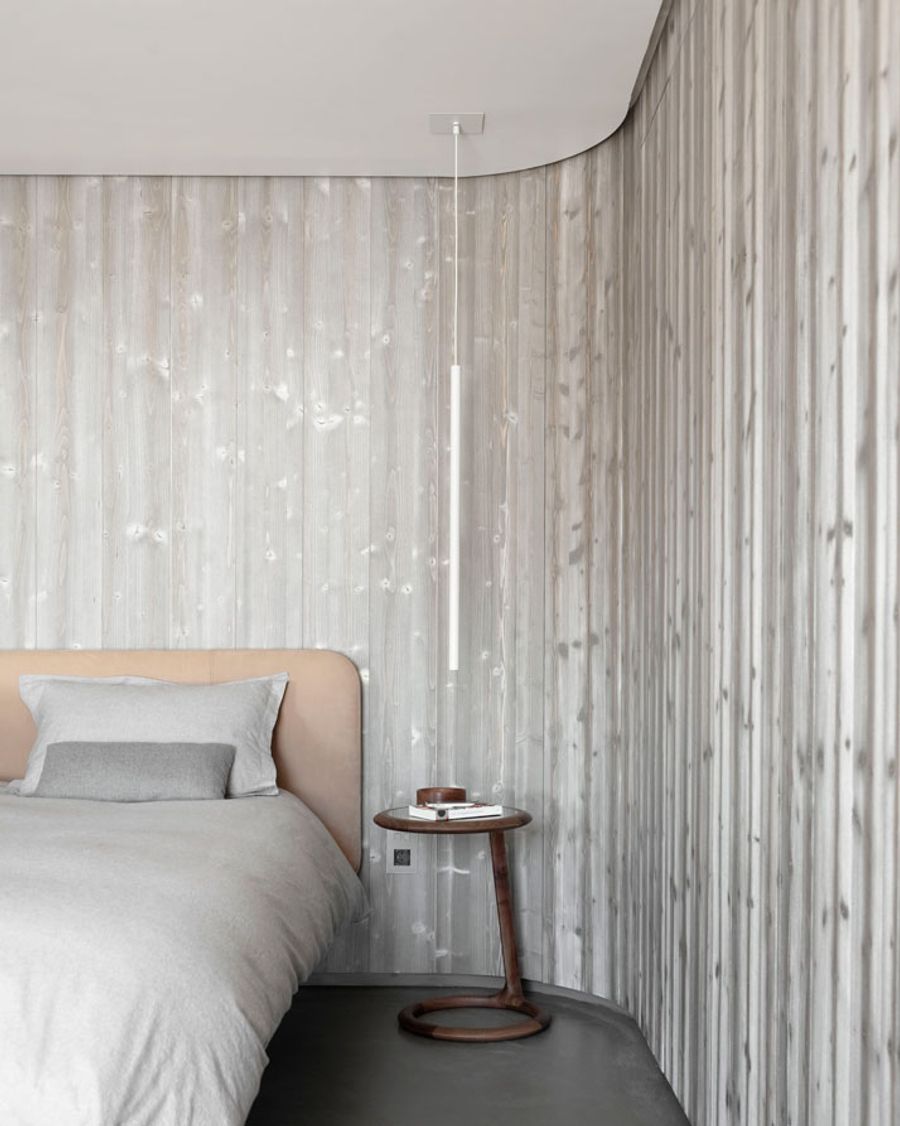
COFFE TABLE: Beside you, Noé Duchaufour Lawrance for Ceccotti collezioni
photo © Vincent Leroux

ARMCHAIR: Derby, Noé Duchaufour for Ceccotti collezioni
OCCASIONAL TABLE : Beside you, Noé Duchaufour for Ceccotti collezioni
HANGING ARMCHAIR : Bubble chair, Eero Aarnio
COFFEE TABLE : Stella, Noé Duchaufour for Ceccotti collezioni
FLOOR LIGHTS : Gregg, Foscarini
FIREPLACE : interior suspended metal structure / concrete coated exterior. Resin concrete coated hearth.
photo © Vincent Leroux
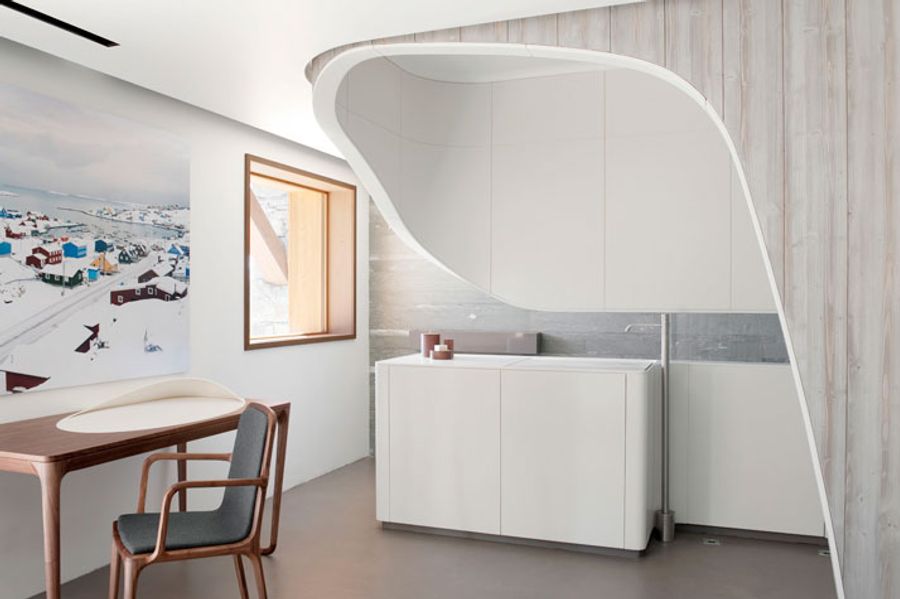
DESK: Sunday Morning, Noé Duchaufour Lawrance for Ceccotti collezioni
OFFICE CHAIR: Otto, Noé Duchaufour Lawrance for Ceccotti collezioni
PHOTOGRAPHY (desk top) : Joel Tettamanti
WASH BASIN FURNITURE: customized Corian
BODY: grey fir exterior/ white coated wood interior with bright section. Chamfer plaster ceiling
PLUMBING FIXTURES: Boffi, Liquid model
photo © Vincent Leroux
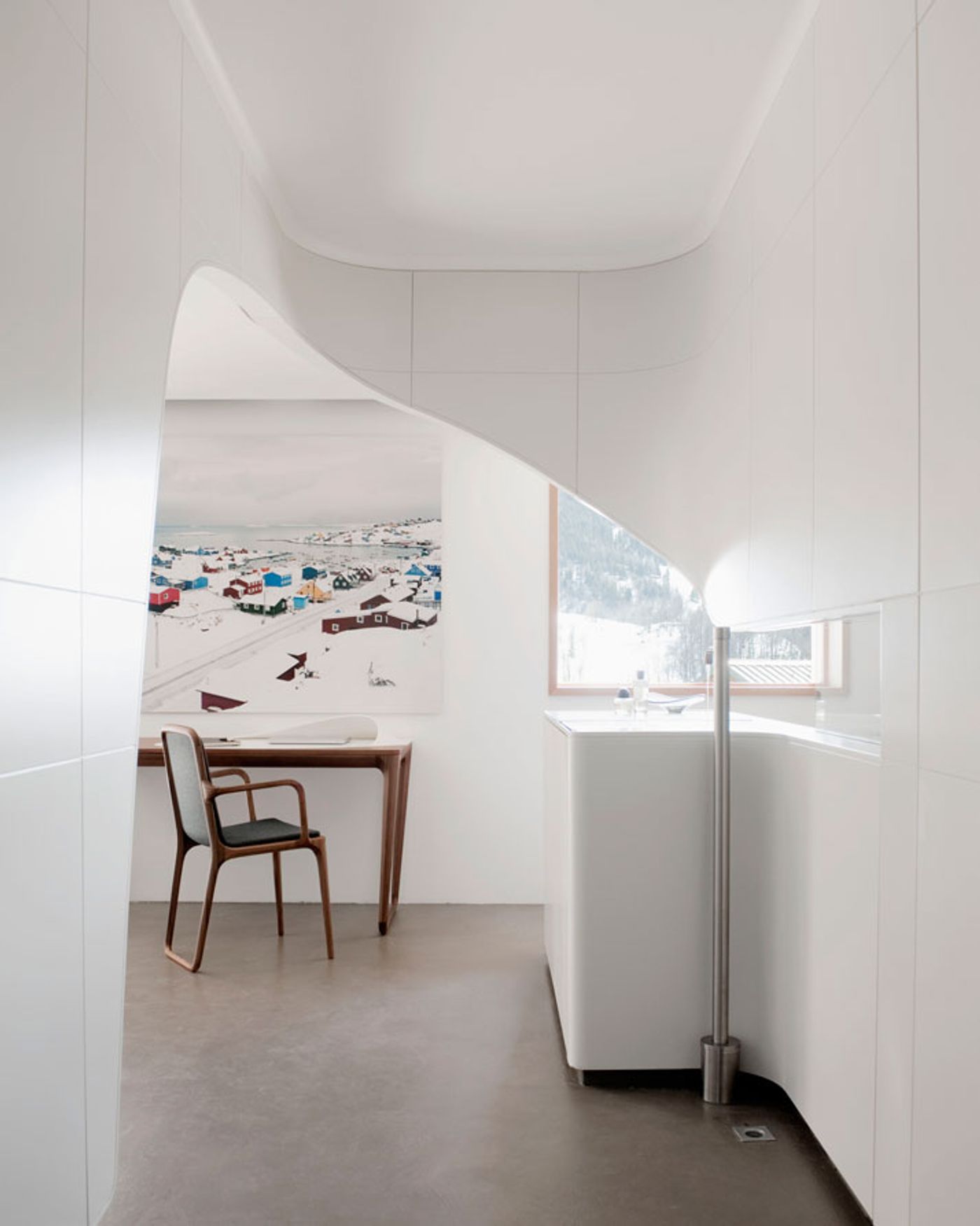
photo © Vincent Leroux
Chalet Béranger Project Credits
Designer: Noé Duchaufour-Lawrance
Project manager: Lluc Giros
Styling: Valentina Pilia in collaboration with Emilie Mureau
